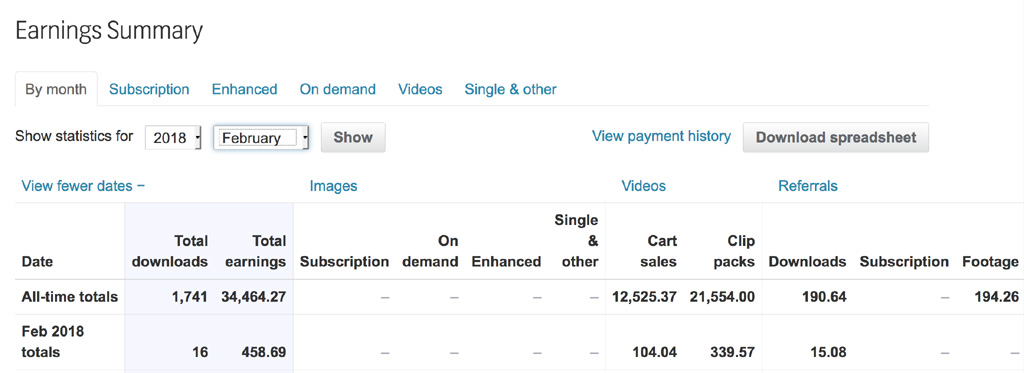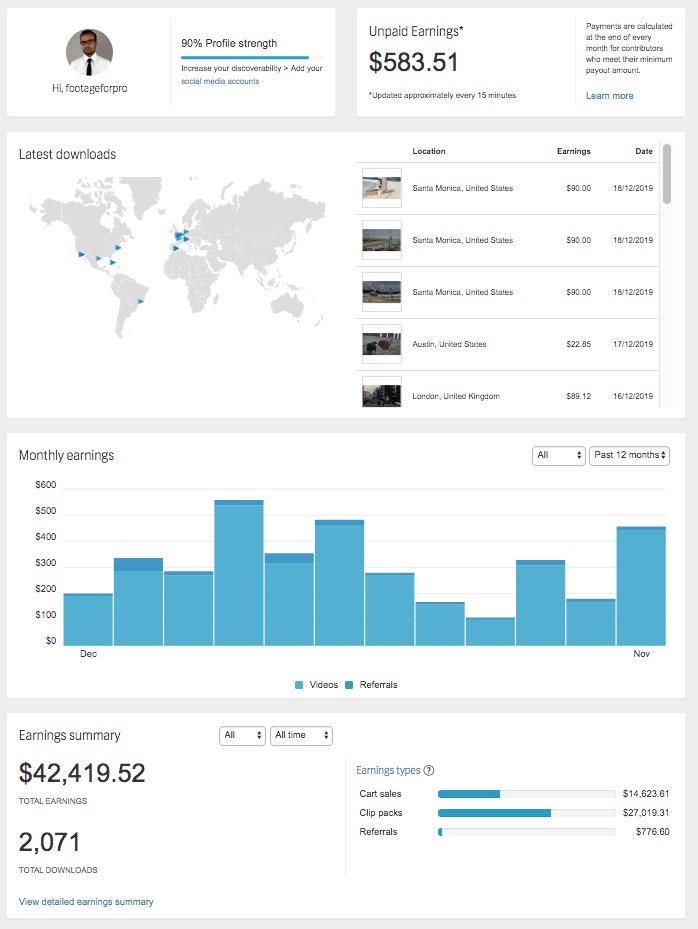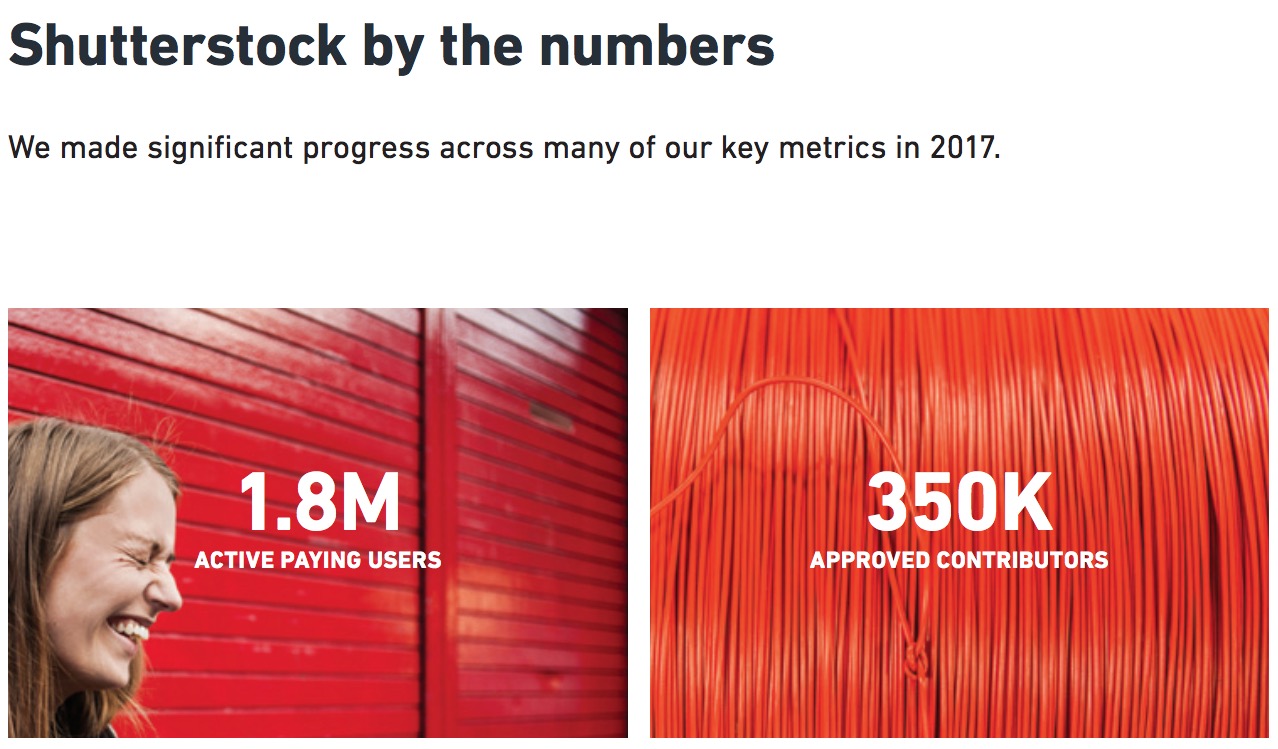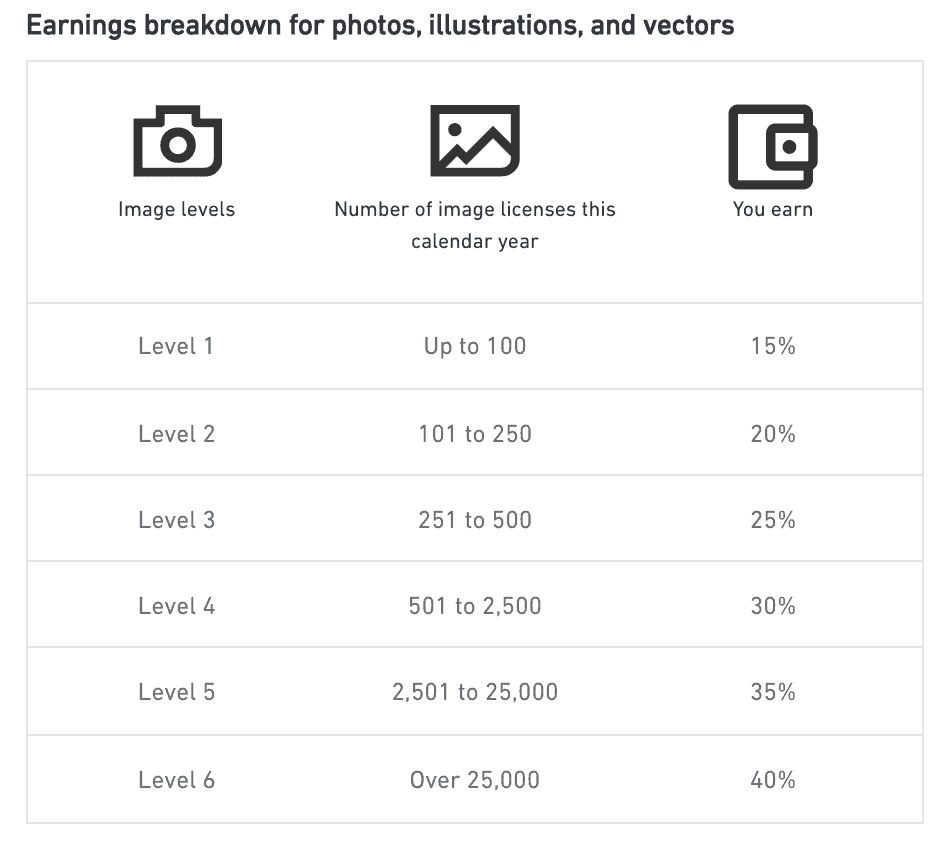Thinking about becoming a Shutterstock contributor or just curious about how the platform works? Shutterstock is one of the largest stock photo websites out there, offering photographers and artists a chance to earn money by selling their images. But how much do you really make per photo? The answer isn’t one-size-fits-all—it depends on various factors like licensing types, your contributor level, and sales volume. In this post, we’ll break down how
Factors That Influence Your Earnings Per Photo

Your earnings per photo on Shutterstock aren’t fixed—they fluctuate based on several key factors. Understanding these factors can help you optimize your contributions and boost your income. Here’s what influences how much you earn per photo:
- Contributor Level and Royalties: Shutterstock has a tiered contributor program. As you upload more approved images and generate sales, you advance through levels—Basic, Plus, and Premium. Each level unlocks higher royalty rates, meaning you earn more per download.
- Type of License Sold: Shutterstock offers two main types of licenses—Standard and Enhanced. Standard licenses are priced lower, and you earn a smaller percentage, while Enhanced licenses are pricier, offering higher earnings per sale.
- Download Volume: The more your photos are downloaded, the more you earn. High-volume contributors often negotiate better rates and enjoy increased exposure, leading to more sales.
- Subscription vs. On-Demand Purchases: Shutterstock offers subscription plans and on-demand purchases. Subscriptions tend to generate lower earnings per download, but they can result in higher overall sales volume, balancing out the income.
- Image Quality and Relevance: High-quality, trendy, and relevant images tend to sell better. Investing in good equipment, editing, and understanding market demand can significantly boost your earnings.
- Keyword Optimization and Metadata: Properly tagging your images helps buyers find your photos easily. Better visibility means more downloads, which translates into higher earnings.
In summary, your per-photo earnings on Shutterstock depend on your contributor level, the types of licenses sold, your sales volume, and how well you optimize your images. Staying aware of these factors and continuously improving your portfolio can help you earn more per photo over time.
How Shutterstock Payment Structure Works

So, you’re curious about how Shutterstock actually pays its contributors? Let’s break it down in a way that makes sense and hopefully clears up any confusion. Shutterstock’s payment system is built around a few key factors: your contributor level, the type of license purchased, and the number of downloads you get.
First off, Shutterstock operates on a royalty-based system. That means every time someone downloads your photo, you earn a commission. But the actual amount you earn per download depends on your contributor level. The more you contribute and the higher your level, the better your royalty rate becomes. It’s a bit like a loyalty program — the more you participate, the more you get paid.
Here’s a quick overview of how the payment tiers work:
- Standard Contributor: New or casual contributors typically start here. Royalties are usually around 15-30% per download.
- Advanced Contributor: As you gain more downloads and improve your portfolio, you can move up to this level, earning about 30-35% per sale.
- Elite Contributor: The top tier, offering the highest royalty rates, often around 40% or more. Reaching this level requires consistent high-quality uploads and sales.
And then there’s the type of license involved. Shutterstock offers two main licenses:
- Standard License: Covers most uses like websites, social media, and personal projects.
- Enhanced License: For more extensive commercial uses, higher print runs, or merchandise.
Typically, the royalty rates for Standard Licenses are fixed, but for Enhanced Licenses, the earning potential can be higher depending on the price of the license sold. The platform handles all the licensing details, so you don’t need to worry about the legal side — just focus on creating great images!
Lastly, payments are made monthly via PayPal or bank transfer, but there’s a minimum payout threshold (usually $35). Once you hit that, Shutterstock processes your earnings, and you get paid for your work. Keep in mind, there’s also a waiting period after your download before the royalty hits your account.
Average Earnings for Shutterstock Contributors

Now, let’s get real about what you can expect to earn as a Shutterstock contributor. The truth is, earnings vary widely based on factors like your portfolio size, image quality, niche, and how often people download your photos. But to give you a ballpark idea, here’s what most contributors see:
| Contributor Level | Average Earnings Per Download | Estimated Monthly Income (for a Small Portfolio) |
|---|---|---|
| Beginner / New Contributor | $0.25 – $0.50 | $10 – $50 |
| Intermediate Contributor | $0.50 – $1.00 | $50 – $200 |
| Top Contributor / Elite | $1.00 or more | $200 – $1,000+ |
These numbers are approximate and depend heavily on your niche and how well your photos perform. For example, if you specialize in high-demand categories like business, technology, or lifestyle, your images might sell more often, boosting your earnings.
Many contributors report earning anywhere from a few dollars a month to several hundred dollars, especially after building a sizable, diverse portfolio. The key is consistency and quality — the more unique, high-quality images you upload, the higher your chances of making more money.
Remember, Shutterstock is a marathon, not a sprint. Some photographers start slow but see their earnings grow as their portfolios expand and their images gain popularity. Patience, persistence, and continuously improving your skills are your best bets for increasing your income over time.
Tips to Maximize Your Income on Shutterstock

Thinking about boosting your earnings on Shutterstock? You’re in the right place! Selling photos online can be a fantastic way to turn your passion into a steady income stream, but it does require some strategic thinking. Here are some practical tips to help you make the most of your time and effort.
Focus on Popular and Evergreen Topics
Some subjects consistently perform well because they’re in demand year-round. Think about creating images related to:
- Business and technology
- Health and wellness
- Food and beverages
- Travel and nature
- People and lifestyle
By targeting these evergreen topics, you increase your chances of making sales over time. Keep an eye on trending topics too—what’s popular today might become a hot seller tomorrow!
Optimize Your Keywords and Titles
Shutterstock’s search function relies heavily on keywords. Use relevant, specific, and descriptive words when uploading your photos. Think about what buyers might search for and include those terms in your titles and tags. Avoid overly generic keywords; instead, focus on accurate descriptors that match your image content.
Upload High-Quality, Unique Images
Quality is king! Ensure your photos are sharp, well-lit, and properly composed. Unique images that stand out from the crowd tend to get more downloads. Experiment with different styles, angles, and subjects to find what resonates most with buyers.
Stay Consistent and Upload Regularly
Consistency pays off. The more quality images you upload, the higher your chances of being seen. Set a schedule—whether it’s weekly or bi-weekly—and stick to it. Over time, a sizable portfolio can lead to more passive income.
Engage with the Shutterstock Community
Participate in forums, follow successful contributors, and learn from their strategies. Sometimes, small insights can make a big difference. Sharing your experiences and asking for feedback can also help you improve your submissions.
Leverage Promotions and Sales
Keep an eye out for Shutterstock promotions, such as featured images or special sales. When your photos get featured or promoted, they can reach a wider audience, translating into more earnings.
FAQs About Shutterstock Photo Payments
Wondering how the payment process works on Shutterstock? You’re not alone! Here are some common questions answered to clear up any confusion.
How Much Do You Earn Per Photo?
Your earnings depend on your contributor level and the type of license purchased. Typically, Shutterstock pays between 25% to 40% of the license fee per download. For example, if a buyer purchases a standard license for $50, you might earn around $12.50 to $20. Depending on your royalty tier, your percentage can increase as you sell more images.
When Do You Get Paid?
Payments are made monthly, usually around the 15th of each month. You need to reach the minimum payout threshold (which varies by country but is generally $35) before you can receive your earnings.
What Payment Methods Are Available?
Shutterstock offers several payout options, including:
- PayPal
- Bank transfer (wire transfer)
- Payoneer (in some regions)
Select your preferred method in your account settings to ensure smooth transactions.
Are There Any Fees or Deductions?
Generally, Shutterstock does not charge contributors fees for payments. However, PayPal or other payment providers may have their own transaction fees, so keep that in mind.
Can I Withdraw My Earnings Anytime?
Yes, once you’ve met the payout threshold, you can request a withdrawal at any time. Just log into your account, go to the payout section, and follow the prompts.
What Happens if My Photos Don’t Sell?
If your images don’t generate sales, you won’t earn anything from them. That’s why focusing on quality, trending topics, and optimization strategies is key to increasing your chances.
Hopefully, these FAQs help demystify the Shutterstock payment process. Remember, building a successful portfolio takes time, but with persistence and smart strategies, you can turn your photography into a rewarding income stream!
Conclusion and Final Thoughts on Earning Potential
Understanding Shutterstock photo payments is essential for photographers looking to monetize their work effectively. The earning potential varies based on several factors, including the type of license purchased, your contributor level, and the total number of downloads. Typically, contributors earn a percentage of the sale price—ranging from 15% to 40% depending on their exclusivity status and earnings tier. For example, exclusive contributors often enjoy higher royalty rates compared to non-exclusive ones.
It’s important to recognize that while some images may generate only a few dollars, high-demand photos can earn substantially more over time. Key factors influencing your earnings include:
- Image quality and relevance: High-quality, trending images tend to sell better.
- Keyword optimization: Properly tagging your photos increases visibility and downloads.
- Contributor level: Advancing through levels can unlock higher royalty rates.
Many successful contributors view Shutterstock as a passive income stream that, with consistent effort and strategic uploads, can become a significant source of revenue. However, it’s crucial to maintain realistic expectations and focus on building a diverse portfolio of appealing images. Over time, as your portfolio grows and your images gain popularity, your earning potential can increase substantially. Remember, persistence and quality are key to maximizing your earnings on Shutterstock.
In conclusion, while the amount you earn per photo varies, understanding the platform’s payment structure and optimizing your submissions can significantly enhance your earning potential. Patience and continuous improvement are vital components of a successful stock photography journey.


